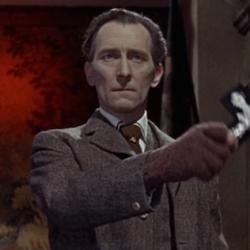I went to a screening of Woodlawn last Saturday. Directed by Birmingham brothers Jon and Andrew Erwin, the film tells the true story of revival among the players on the football team at Woodlawn High School in Birmingham during a racially tense period of the 1970s.
The film focuses on Tony Nathan, the tailback who takes the position from a white teammate and becomes a star. The real-life Tony Nathan went on to play at Alabama and for the Miami Dolphins.
It’s a moving story, with some high-pitched emotional scenes. The acting is good, especially Jon Voight as Bear Bryant, Nic Bishop as Woodlawn’s coach, Tandy Gerelds, and Caleb Castille who plays Nathan in his first film. Technically, Evangelical films have come a long way.
The large crowd at the screening cheered when Woodlawn scored a winning touchdown, shouted when Tony Nathan dodged a tackle, laughed at the punch lines. It was a very into-it crowd.
Yet I came away from the film dissatisfied, as I do from many films by Evangelicals. I think there are a number of reasons for that dissatisfaction, but at base the problem is theological (ain’t it always).
Evangelicalism is a word religion. I’m a big fan of words, but even talking pictures aren’t fundamentally about words. It’s no accident that the hall of fame for directors has a large share of Catholics (Fellini, Hitchcock, Scorsese), Orthodox (Tarkovsky, Eisenstein), and sacramental Protestants (Bergman, Malick). This can’t be the whole story, of course, since aniconic Judaism has produced some of the world’s great filmmakers. But there’s something to it: Evangelical films over-explain, over-talk. They don’t trust the images to do the work.
I suspect a more sacramentally oriented Evangelicalism, an Evangelicalism more attuned to types and symbols in Scripture, would make better films.
Evangelicalism is also a conversionist faith. The key crisis of life is the moment of commitment to Christ. In Woodlawn, most of the characters convert early in the film, necessarily so because the story is about the effect of the revival on race relations. But that means that the line of character development is flat. The really crucial character development has taken place in the moment of conversion. The main exception is Coach Gerelds, and not surprisingly, it’s Coach Gerelds who ends up being the dramatic focus of the film, the character whose emotions and motivations we get to know best.
Theologically speaking, character development is “sanctification.” A conversionist form of Christianity places less emphasis on sanctification than on conversion and justification. In films, that translates into drastic oversimplification of human psychology. For Evangelicals, there are only two sets of motivations, as there are two kinds of people: Saved and unsaved. While that is ultimately true, it is not the whole story.
Though I’m an Evangelical Protestant, I find the characters in a good mainstream film more psychologically real than characters in Evangelical films. It need not be so. One need only read a bit of Augustine’s Confessions or Pascal or Kierkegaard or Dostoevsky to get a taste for the possibilities of Christian psychology.










